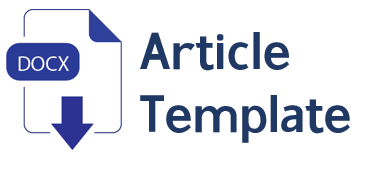APPLICATION OF AUGMENTED REALITY TECHNOLOGY AS A LEARNING MEDIA
Abstract
Keywords
Full Text:
PDFReferences
Yunisa, Nanda, “Buku Pintar Matematika Sekolah Dasar 5,” in Permata Express, 2015.
Suwito, “Rumus – Rumus Matematika SD”, in Gitamedia Press, 2003
Efendi, Y., & Khoirunnisa, E. (2016). Penerapan Teknologi AR (Augmented Reality) Pada Pembelajaran Energi Angin Kelas IV Sd di rumah pintar Al-Barokah. Journal Information System [Online]. 9(1), 29-47. Available: http://journal.uinjkt.ac.id/index.php/sisteminformasi/article/view/2962
Feranita, D., Karyanto, P., Oetomo, D., & Sumarjiyana, T. (2015). Pengaruh Penerapan Media Pembelajaran Augmented Reality ECO-AR 1-3 Terhadap Peningkatan Dimensi Ecological Knowledge dalam Kosep Literasi Lingkungan The Effects of Augmented Reality ECO-AR 1-3 as an Instructional Media to Increase Ecological Knowledge Dim. Proceeding Biology Education Conference [Online]. 15, 414-42. Available: https://jurnal.uns.ac.id/prosbi/article/view/32494
M. Afdal, Muhammad Irsyad, & Febi Yanto. (2018). Penerapan Teknologi Augmented Reality Pada Media Pembelajaran Lapisan Permukaan Bumi Berbasis 3d. Scientific Journal of Information Systems Engineering and Management [Online]. 4,1-10. Available: http://ejournal.uin-suska.ac.id/index.php/RMSI/article/view/4602
Mauludin, R., Sukamto, A. S., & Muhardi, H. (2017). Penerapan Augmented Reality Sebagai Media Pembelajaran Sistem Pencernaan pada Manusia dalam Mata Pelajaran Biologi. Journal of education and informatics research [Online]. 3(2), 42–48. Available: https://jurnal.untan.ac.id/index.php/jepin/article/view/22676
Mustika, Ceppi Gustiar Rampengan, Rheno Sanjaya & Sofyan. (2015). Implementasi Augmented Reality Sebagai Media Pembelajaran Interaktif. Creative Information Technology Journal [Online]. 2. Available: https://citec.amikom.ac.id/main/index.php/citec/article/view/55
Re Arief Ahmadi, John Adler, & Selvia Lorena Ginting. (2017 Teknologi Augmented Reality Sebagai Media Pembelajaran Gerakan Shalat.Prosiding Seminar Nasional Komputer dan Informatika (SENASKI). Proceedings of the National Seminar on Computing and Informatics [Online]. Available: https://ojs.unikom.ac.id/index.php/senaski/article/view/940
Rizqi Mauludin, Anggi Srimurdianti Sukamto, & Hafiz Muhardi. (2017). Penerapan Augmented Reality Sebagai Media Pembelajaran Sistem Pencernaan pada Manusia dalam Mata Pelajaran Biologi. Journal of Education and Informatics Research [Online]. 3,2. Available: https://jurnal.untan.ac.id/index.php/jepin/article/view/22676
Sani, D. A. (2017). Efektifitas Aturan Main untuk Game Edukasi Kosakata Bahasa Arab Berbasis Mobile. Journal of Information Technology [Online]. 2,2. Available: https://ejurnal.itats.ac.id/integer/article/view/176
DOI: https://doi.org/10.33365/jtst.v5i2.4575
Refbacks
- There are currently no refbacks.
Copyright (c) 2024 Muhammad Mahrus Ali
Jurnal Teknologi dan Sistem Tertanam
Organized by: The S1 Computer Engineering Study Program, Faculty of Engineering and Computer Science
Published by: Universitas Teknokrat Indonesia
Website: http://ejurnal.teknokrat.ac.id/index.php/JTST
Email: jtst@teknokrat.ac.id
Address: ZA. Pagar Alam Street No. 9 -11, Labuhan Ratu, Bandar Lampung, Indonesia 35132
________________________________________________________________________________________
Jurnal Teknologi dan Sistem Tertanam is licensed under a Creative Commons Attribution-ShareAlike 4.0 International License.











